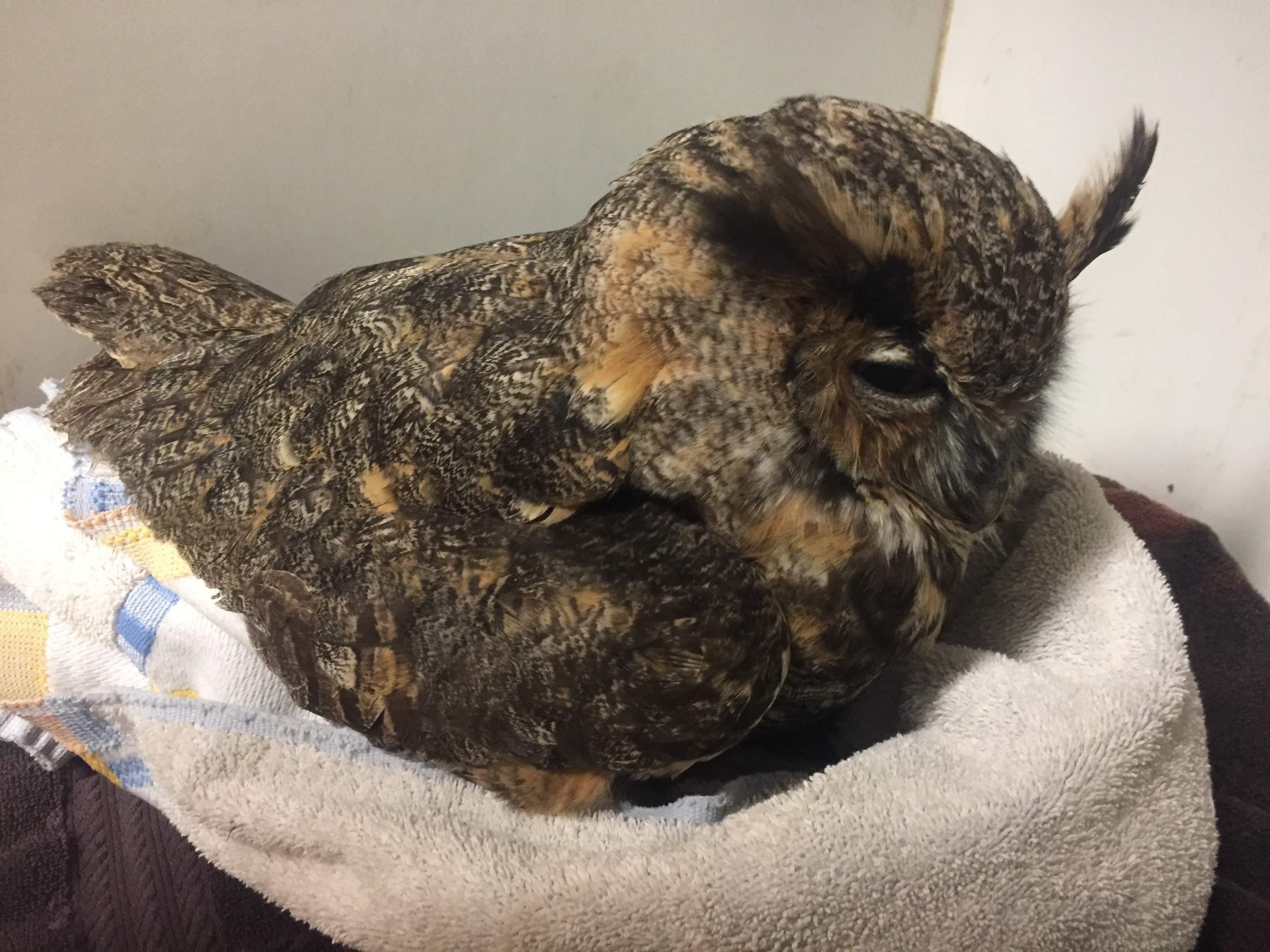Rodenticides are poisons that are set out to bait and kill rodents. The rodent will consume the bait and go back to its nest in the wild. Over a period of days, they frequently return to the station and ingest more poison until lethal levels build up in the body.
It can take days for the rodent to die from the poison, making it an easy meal for a predator – like a an owl or hawk – in the meantime, second generation anticoagulant rodenticides (SGARs) prevent the clotting mechanisms in blood, eventually causing fatal internal bleeding.
UPDATE AS OF 3/29: "AN ACT CONCERNING THE USE OF CERTAIN RODENTICIDES" (HB5217) will be referred to the Appropriations Committee of the General Assembly after April 5, 2024. Sign up to be alerted when important legislation is on the line.
Rodenticide affects far more than just the rats and mice it is put out to kill. While raptors and other predators are non-target species (not the intended animal to be poisoned), secondary poisoning is an all-too-frequent occurrence. And, because SGARs can stay in a raptor’s body for nearly 3.5 months, it can take time for the amount of ingested rodenticide to reach lethal levels in these non-target species. Vitamin K therapy is available, but treatment takes several months.
Those birds admitted into rehabilitation are often too far gone to be helped. This is a sad reality that wildlife rehabilitators see all the time. Flaco, the famous Eurasian Eagle-Owl that lived in Central Park after escaping his enclosure in the Central Park Zoo, was found upon his death to have been exposed to four different SGARs that are commonly used for rat control.
Here at our Sharon Audubon Center Wildlife Rehabilitation Clinic, a big, gorgeous female Great Horned Owl was brought in laying down, unable to stand or even lift her head. She was experiencing neurological symptoms like body tremors and dilated pupils.

Her chest was well muscled, indicating a healthy, robust body condition, but the same muscles showed dark, purple, and bruised under her skin due to blood pooling. Also incredibly upsetting, blood was draining from her sinus cavity out her nostrils and into her mouth. Her internal bleeding was caused by SGARs and represent classic symptoms of rodenticide poisoning in birds of prey.
We attempted to heal her, but there simply wasn’t enough time. It is absolutely devastating to see these gorgeous, and healthy birds of prey being killed slowly and painfully after just trying to eat a meal.
While there are obvious symptoms in raptors with rodenticide poisoning, the impacts are often invisible. Wildlife rehabilitation centers have done studies, testing birds who come in to their clinic for rodenticides, even if they are not displaying symptoms. A study published in 2020 by Tufts Wildlife Clinic at Cummings School of Veterinary Medicine showed that 100% of the Red-tailed Hawks admitted into their clinic tested positive for the presence of rodenticides.
Adding insult to injury, symptoms of rodenticide can present as many other illnesses when SGARs are below lethal levels. Diagnostic tests are expensive and not always accessible for all rehabilitators who care for raptors, so we can conclude there are far more poisoned birds coming into rehabilitation clinics than are officially confirmed.
Please note that putting poison in traps where rodents cannot escape causes secondary poisoning risks if not properly disposed of as toxic waste. Throwing these sealed rodent traps into the garbage will contaminate waste sites/dump sites, putting the scavenger species (like vultures and eagles) that frequent those locations at risk if those boxes break or leech.



